

Tao Te Ching
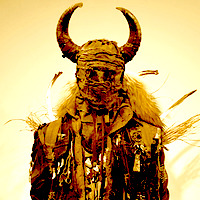
Shamanistic Lineage
An ancient healing tradition, a way of life rooted in the natural world, a universal and indigenous spiritual approach common to cultures in almost every time and place, doorway into deeper consciousness; shamanism heals duality, connects people to meaningfulness and values much deeper than materialistic culture. It focuses on healing body and soul, individual and society. Today, strong Shamanistic practices are popular in Korea, Mongolia, Indonesia, Russia, Africa, China, the Philippines, Europe, South-Central-North America, the Ua Neeb tradition popularized by the Hmong scattered after the Viet Nam war, and in Japan as a basic part the indigenous Ainu religion and Shinto.
People (37)
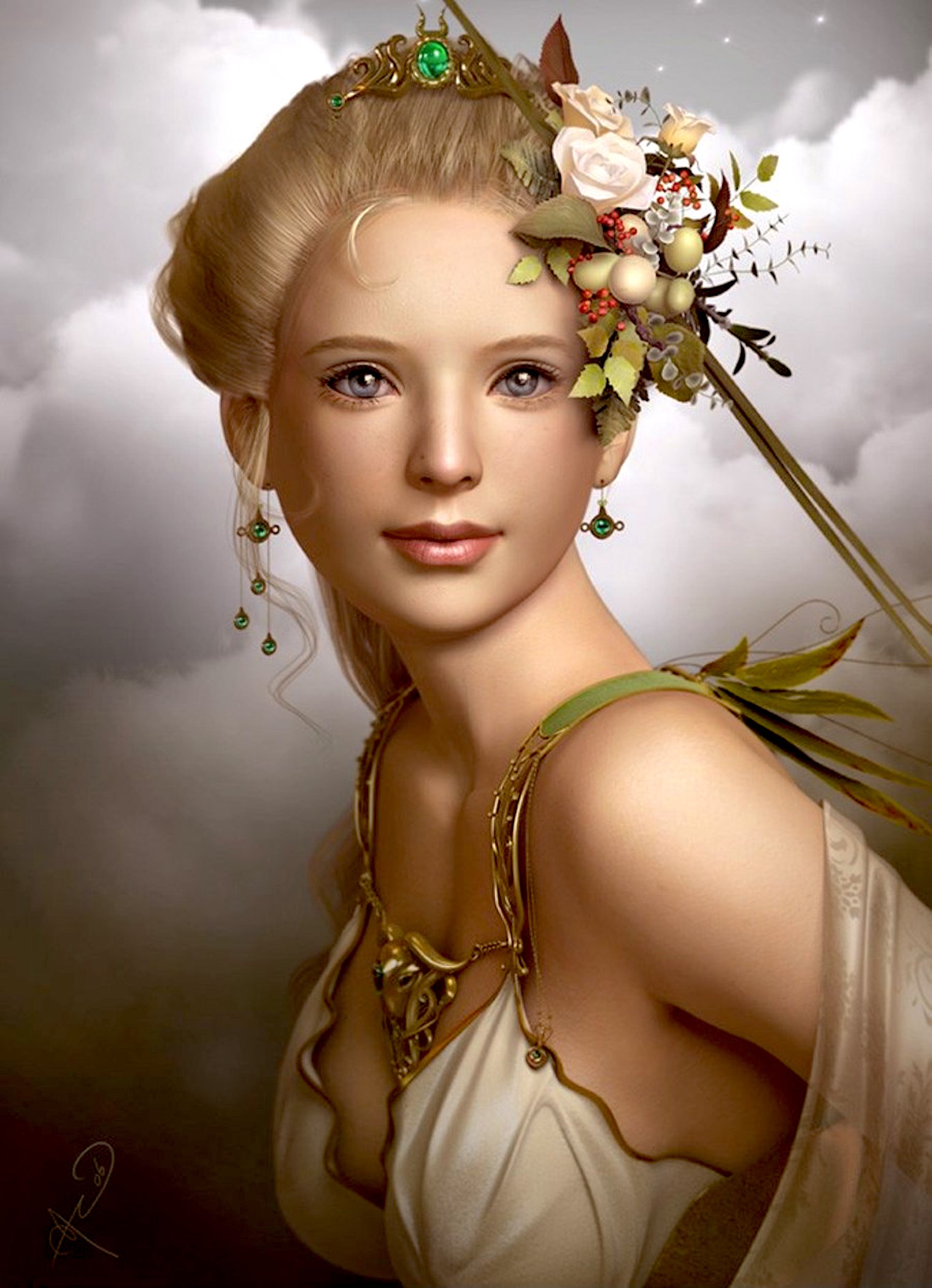
Demeter (Ceres)
c. 2500 BCE
Eleusinian goddess, discoverer of agriculture
“Where smoke, there’s fire” and where a god or goddess, probably real people beginning the symbolism. Like Shennong in China, the Greeks credited Demeter with the discovery of agriculture and like the Chinese Nüwa as the transition from matriarchal to patriarchal society. Assuring fertility with mystic rites and social order as "Law-Bringer;” she predates the Olympian pantheon and with her daughter Persephone is central to the Eleusinian Mysteries, a holy, psychedelic communion celebrating birth, death, and resurrection giving (along with the Egyptian belief in immortality) to Christianity a “weapon with which to conquer the Western world” (Durant).
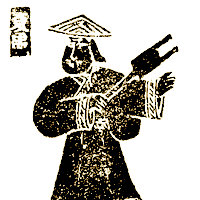
Yu the Great 大禹
c. 2200–2100 BCE
Leader of the Five Water Immortals
Philosopher-king, prototype ruler of ancient China, Taoist water deity, and leader of the Five Water Immortals; Yu became famous for introducing flood control, establishing dynastic rule, and for his impeccable integrity. One of the few Chinese rulers to be given “The Great” title, he is often seen in statues carrying an ancient hoe. Imperial emperors including Qin Shi Huang often traveled to his shrine to perform rituals.
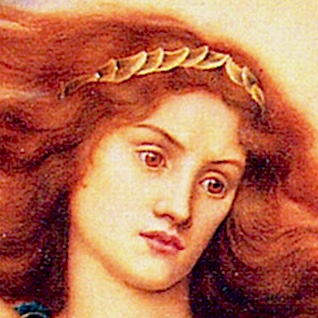
Cassandra
12th C. BCE
Oracle of Crazy Wisdom
Symbol of the wisdom that’s hard to hear or difficult to practice when we do hear it, Cassandra also represents the disastrous consequences of not listening to that wisdom. Like her, many of the lineage holders on this list during their lifetimes were thought crazy, subversive, completely wrong and were only believed and respected much later. She personifies the intuitive, artistic, open approach to life in balance with Apollo’s linear emphasis on clear definitions, order, and superficial understanding of just the words, not the sense. We see both of these principles magnified today in politics and environmental debate, in all our forms of individual and social denial.
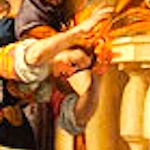
Lavinia
12th C. BCE
Prophetess and co-foundrer of the Roman Empire
Probably a legendary figure but “where there’s smoke, there’s fire” and Lavinia’s symbolic meaningfulness rates her place here. Co-foundress of the Roman Empire, prophetess, daughter of a king, wife of Aeneas, made famous by Virgil, Dante and Ursula Le Guin; Lavinia helped continue the Trojan traditions and ruled “behind the throne” for her too-young-to rule son with Aeneas, Ascanius whose progeny Romulus and Remus established Rome. She represents convergence and appreciating diversity rather than allegiance to narrow sectarianism. The symbol of her hair catching on fire foreshadows both the brilliance and violence of the Roman empire.
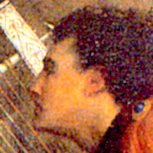
Orpheus /ˈɔːrfiəs
7th century BCE
"Greatest poet and musician of all time"
Accepted by most ancient sources as a real person but also shrouded in myth and legend, Greeks venerated Orpheus as the greatest poet and musician of all time believing his music could charm animals, divert rivers, and even make rocks and trees dance. As prophet, musical archetype, and founder of the Orphic mysteries; his influence on art, poetry, film, opera, music, and painting continues into modern times. As well as influencing Stoic pantheism and the Neo-Platonists’ asceticism; he continued a mystic cult migrated from Egyptian Osiris that included the suffering, death, and resurrection of a divine son; judgments at death of heaven, hell, or purgatory; “original sin,” and a communion sacrament of eating a god’s body and blood; it became a basis for the Christianity flourishing today.

Zarathushtra زرتشت (Zoroaster)
628 – 551 BCE
Said to have laughed out loud the day he was born and considered a true prophet by Islam, an important influence on Judaism, the Greek philosophers, and on philosophy in general, Zarathushtra founded Zoroastrianism, the official religion of Persia from 600 BCE until 650 CE when Islam took over. A shaman called inventor of astrology, he based his teachings on what we now call the Golden Rule, founded the Magi tradition and opposed the oppressive caste system of his time. Although against polytheism and emphasizing belief, his religion taught the meaningfulness of each small action increasing goodness or evil. From it we inherit common symbols like magic, heaven and hell, purgatory, Satan, the 3 Wise Men, angels, Christmas, and the Last Judgment.

Lao Tzu 老子 (Lǎozǐ)
604 BCE -
The poems translated here say more about Lao Tzu than could any commentary on his life. A huge influence on all of Chinese culture, much of Chinese literature and almost all of Chinese art, Lao Tzu’s teachings also extend to every aspect of life including politics to such an extent that he was claimed as an ancestor by the emperors of the Tang dynasty. Some call Zen “Taoism in Buddhist clothing” and these teachings continue to inspire people in all of the non-thought lineages. As Ursula Le Guin comments, “Of all the deep springs, this is the purest water.”
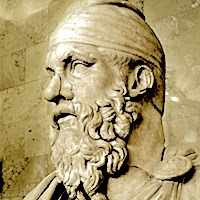
Abaris Hyperboreios βαρις Ὑπερβόρειος
595 – 595 BCE
Legendary sage, Mongol shaman, and catalyst for the beginning of Western Civilization
Abaris Hyperboreios, Skywalker βαρις Ὑπερβόρειος (c. 595 BCE)
Legendary sage, Mongol shaman, ancient ambassador of Eastern Wisdom to the West, “master of incantations,” and “Overcomer of Obstacles;” One of the earliest druids, Abaris became a famous and greatly respected sage in pre-Socratic Greece. Plato described him as a great physician who healed both body and mind, Herodotus depicted him as a magical arrow traveler, and anecdotes written by Pindar, Iamblichus, Pausanias, and Suidas characterized him as sorcerer, prophet, shamanistic missionary, purifier and bringer of balance to the earth. Peter Kingsley links him to the early formation of Tibetan civilization as well as being the soul-brother of Pythagoras, the spark that lifted the Greeks out of their primitive state, and the catalyst for the beginning and momentum of Western Civilization.
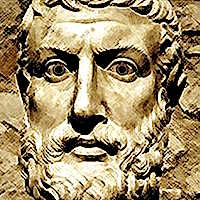
Parmenides
540 – 450 BCE
Grandfather of Western philosophy
Parmenides of Elea Παρμενίδης ὁ Ἐλεάτης (c. 540 - 450 BCE)
Father of Western logic, grandfather of Western philosophy, major influence on the development of science, promoter of the most paradoxical (contrary to appearances) vision of reality, and venerated by Plato and Aristotle; Parmenides taught that our experiences of “reality” are illusory, that the profound oneness of life makes change impossible, existence timeless, and that nothing either dies or is born. In The Way of Opinion, he explains the world of appearances, in which one's sensory faculties lead to conceptions which are false and deceitful. In The Way of Truth, he describes a mystical experience of absolute, unborn reality. These categories parallel our theme of “the words or the sense.”

Empedocles
490 – 430 BCE
"The father of rhetoric"—Aristotle
Empedocles Ἐμπεδοκλῆς (490 – 430 BCE)
Brilliant orator, physician, poet, vegetarian, magician, pre-Socratic Greek philosopher, and called by Aristotle the father of rhetoric; Empedocles, according to Kingsley, “brought the germs of a new civilization into existence” and became a foundational researcher who set the stage for Euclid and the other early scientists. Also a highly successful politician who helped over through tyrannical and oligarchic governments but then declined offered sovereignty, he was the last Greek philosopher to write in verse. First in the west to describe the four classical elements, he taught the first comprehensive theory of light and vision, anticipated Darwin's theory of natural selection, and believed that all living things reincarnate between humans, animals and plants. Said by Pliny to have traveled to the east and studied with the Magi, Empedocles explained how limited and narrow our perceptions remain while our concepts fool us into believing we understand the whole, how we believe the words without insight into the sense.
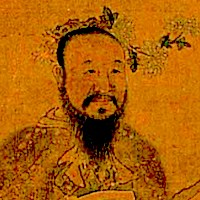
Qu Yuan 屈原 (Qū Yuán)
340 – 278 BCE
"King of the Water Immortals"
Patriotic poet, politician, Chu royal clan official, and inspiration for China's Dragon Boat Festival; Qu Yuan wrote at least some of the Chu Ci (Songs of the South) poems—one of China's two most famous ancient collections. Slandered and exiled by corrupt officials while helping King Huai, the same thing happened while advising King Qingxiang causing him to spend his time collecting folk tales and legends while writing some of China's greatest poetry. In a deep depression from his exiles as well as the Qin State's conquering of his country's capital, he committed suicide as a way of protecting his integrity. Mao tried to replace Confucius with Qu Yuan as a cultural hero.
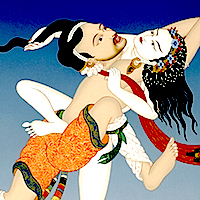
Carbaripa ཙ་རྦ་རི་པ། (Carpati, “The Petrifier”)
9th Century CE
Mahasiddha #64
Legends about Carbaripa seem to fit better in the shaman lineage than the buddhist one. These stories could be an example of reinterpretating symbols from a different point of view. From the shamanistic point of view, stories about him turning people to stone imply magic and the power of place. From the buddhist viewpoint, these can be interpreted as a teacher’s ability to disperse disciples discursive thoughts and distractibility, their skill in inspiring the transformative powers of deep meditation. A deeper meaning can be understood in how he liberated people from their petrified social and cultural concepts. The main legend about him describes him helping a young wife abused and beaten by her wealthy husband and his aggressive, controlling mother. The stories don’t describe but pictures of him frequently show him copulating in the sky with this young wife. Mahasiddha #64
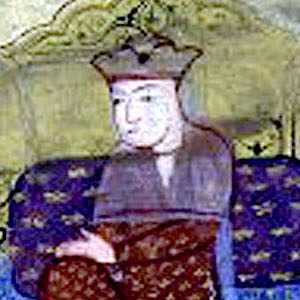
Alan Gua (Алун гуа)
832 – 884 CE
"Alun the Beautiful"
Living ten generations before Genghis Khan, Alan Gua is credited with forging the original Mongol clans together when she taught her five sons the parable of the five arrows showing them how easy it is to break one arrow but how impossible when the five are bound together. This image was powerful enough to overcome her first two son’s suspicions and jealousy when she had three more sons after their father died and explained the new births as a result of a heavenly, “glittering visitor” who came through her yurt’s roof on moonbeams “like a yellow dog.” This story/image transmitted from the Mongols to the Iroquois Confederacy through Deganawida and Hiawatha and to the US Founding Fathers becoming incorporated as the Great Seal of the United States and the same essential message into the US Constitution.
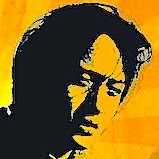
Milarepa རྗེ་བཙུན་མི་ལ་རས་པ།
1052 – 1135 CE
Black magician enemy-killing sorcerer transformed into a great Tibetan folk hero, poet, singer-songwriter and saint; Milarepa always refuted any hero worship or deification stressing his humble background and realization that anyone could achieve. Overcoming powerful, psychological demons, he left far behind fame, fortune, pleasure, power, even companionship and after many years of solitary meditation wandered throughout Tibet teaching and leading students to illuminating, egoless, complete sanity beyond the corruptions of a belief in a separate self. Profound without pretense, ageless because authentic, livable because so simple; Milarepa’s teaching and inspiration continues.
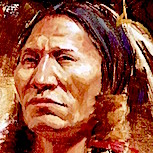
Deganawida (“The Great Peacemaker”)
12th century CE
Founder of the largest and most powerful Native American union, the Iroquois League, "The Great League of Peace" based on sharing and cooperation that established the world’s the oldest participatory democracy and brought a golden age to the native American tribes in the Great Lakes/ New York region for hundreds of years, Deganawida worked all his life bringing this vision to our world. Deeply admired by George Washington and Ben Franklin, this League was a big influence on the original thirteen colonies becoming one republic, on furthering the democratic principles included in the US Constitution, modeling and inspiring the League of Nations and now the United Nations. Identified by many members of the Bahá'í Faith with their founder Bahá'u'lláh, Deganawida continues as a voice of peace and sanity in our modern world.
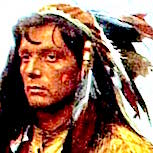
Hiawatha Haiëñ'wa'tha
12th century CE
Shaman, statement, and disciple of Huron prophet and spiritual leader, “The Great Peacemaker” Deganawida; Hiawatha used his charisma and great oratorical skills to spread his teacher’s message of peace and unity bringing together many tribes into the world’s oldest and longest lasting participatory democracy. Deganawida had deep wisdom, vision and spiritual presence but also a severe speech impediment. Like Plato for Socrates, Ashoka for the Buddha, Chuang Tzu for Lao Tzu, Mencius for Confucius, and Paul for Jesus; Hiawatha brought his teacher’s message to the greater world. Gathering the tribal leaders and agreeing on a union, they buried their weapons and on top planted the “Tree of Peace.”
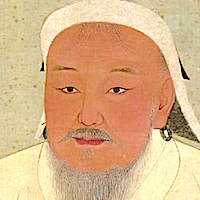
Genghis Khan
1162 – 1227 CE
Genghis Khan (c. 1162 – 1227)
Maligned by history, feared by all, conqueror of more territory, people, and countries than anyone either before or since; Genghis Khan rises high on the scale of best-known historical symbols. Although a continually creative innovator who helped establish the modern world by promoting religious tolerance, international law, and the cross-fertilizing of multi-cultural medicine, science, trade and art; most historians and stories label him as barbarian, bloodthirsty, and cruel. Perhaps it was his extreme openness and tolerance that invited this projection. Coming into Europe and many countries during times of deep corruption, intolerance, and exploitation; his openness and tolerance became the real threat, deeper than his military might. His legacy shows that the real “barbarians” were the culturally chauvinistic, narrow-religion-trapped believers, and tradition-blinded people of his and our own time.
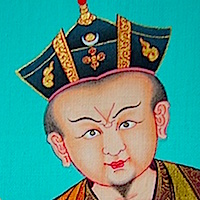
Karma Pakshi ཀརྨ་པཀྴི་
1204 – 1283 CE
Karma Pakshi ཀརྨ་པཀྴི་ (1204 – 1283)
The 2nd Gyalwa Karmapa and descended from a royal bloodline, Karma Pakshi brought the ancient, pre-Buddhist, shamanistic tulku (sprul sku) tradition into Tibetan Buddhism. Traveling widely in Tibet, Mongolia, and China he met Marco Polo but refused Kublai Khan’s request to stay in China. This incurred the emperor’s anger but he transformed it into a respect so deep that he was given the Mongolian name Pakshi (Bagshi) traditionally reserved for the highest Mongol shamans. Famous for his healing powers, sorcery, and ecstasy; he supported religious tolerance, non-Buddhist religions, and created immense balance and harmony. Bringing an ancient pillar of Dharma King Ralpacan (802-836 CE) known as "son of God" into the courtyard of his seat at Tsurphu, he further established his roots in the same ancient tradition that became the Orphic mysteries in pre-Socratic Greece and set up the conditions for the Dalai Lama’s blending of spiritual and secular leadership.
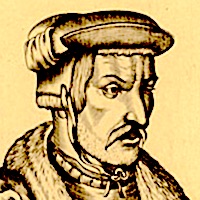
Agrippa (Heinrich Cornelius Agrippa von Nettesheim)
1486 – 1535 CE
Historian of the occult and early, important influence on science
Physician, soldier, polymath, theologian, and the most important magic occultist of his age; Agrippa pushed hard on the ideological and religious belief boundaries of his time and, as a consequence, found himself at odds with inquisitors, banished, imprisoned, and continually threatened. His books shifted historical trends. One attacking the contemporary state of science influenced writers like Goethe, Montaigne, and Descartes. A book he wrote in 1529 argued for the moral and spiritual superiority of women and his 3-volume Occult Philosophy (printed 1531-1533) became a foundational resource for Occultists then and now. In Mary Shelley's famous novel, his writing are described as a major influence on the young Victor Frankenstein and he's similarly cited in works by Christopher Marlowe, Søren Kierkegaard, and J. K. Rowling.
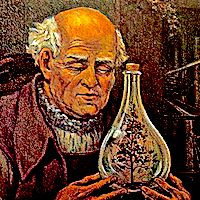
Paracelsus (Theophrastus von Hohenheim)
1493 – 1541 CE
Revolutionary, shamanistic alchemist
“Father of toxicology,” alchemist, medical revolution pioneer, and astrologer; Paracelsus was venerated by the Rosicrucians, intensively studied by Carl Jung, and revered by future physicians who universally recognize his medical contributions. He criticized the popular purging and bloodletting techniques of his time as well as the practices of applying cow dung to wounds. He revolutionized medicine by conceiving clinical diagnosis, promoting the keeping of wounds clean, anticipating Germ Theory, using specific instead of cure-all medicines, doing medical experiments on animals, treating mentally ill as treatable instead of possessed by evil spirits, discovering that syphilis is contracted by contact, that “poor blood” can be improved with iron, and creating the terms "chemistry," "gas," and "alcohol.” Jung carried on his work of alchemy as symbolic language expressing unconscious and innate psychological influences.
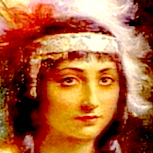
Pocahontas (Matoaka)
1596 – 1617 CE
Daughter of a powerful Native American Chief, savior of John Smith, supporter of the Jamestown colony, and the first Native American featured on a US stamp; Pocahontas was captured and held for ransom during an English-Indian war. Instead of returning to her tribe when she could, she stayed with the English, converted to Christianity and proceed to convert hearts and minds in both America and Europe. Her name literally means “little reckless” and she was called in Europe a "civilized savage" but history clarifies the European savagery, the Native American wisdom. Her descendants include two first ladies, Nancy Reagan and Woodrow Wilson's wife, Edith Wilson; actor Glenn Strange famous for his roles as Frankenstein’s monster and the Gunsmoke bartender; as well as astronomer Percival Lowell responsible for the discovery of Pluto and an important inspiration for H.G. Wells, Robert Heinlein, Ray Bradbury, and Edgar Rice Burroughs.
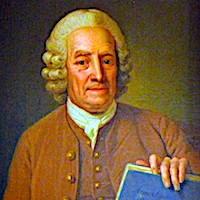
Emanuel Swedenborg
1688 – 1772 CE
Scientist, mystic, influential philosopher
A scientist, philosopher, theologian, inventor, and mystic; Swedenborg began his career as a genius-level scientist and later—detesting the materialism of his academic life—experienced visions and became a highly influential and mystical theologian. He was the first to identify nerve cells, identify the brain's cortex, and pioneered many discoveries in magnetism, phosphorescence, and brain function. His mystical visions described visits to heaven and hell, conversations with spirits from the moon, the planets in our solar system as well as with those from planets further away. His influence spread throughout Europe and into modern times through figures like William Blake, Coleridge, Emerson, Browning, and several Christian denominations.
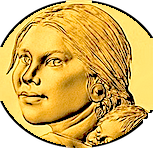
Sacagawea
1788 – 1812 CE
When 12, kidnapped and claimed by a rival tribe after a battle, when 13 won as 2nd wife by a gambling trapper, when 17 hired as guide and translator by the Lewis and Clarke expedition; Sacagawea traveled thousands of difficult miles sometimes surviving on only candles but saving and assuring the expedition’s success while opening communication with many isolated groups and spreading understanding. Immortalized in the names of rivers, mountains, parks, and trails; on a US 1$ coin, in literature, and in music from Phillip Glass to Stevie Wonder; she was considered a hero and taken as an example of strength, independence, and self-worth by the Women’s Suffrage Association.
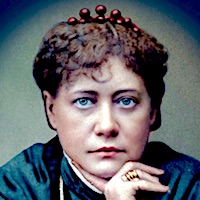
Blavatsky, Helena Еле́на Петро́вна Блава́тская
1831 – 1891 CE
Co-founder of Theosophy
Mystic, medium, philosopher, co-founder of Theosophy; Blavatsky traveled widely and claimed to meet many “Masters of the Ancient Wisdom.” She studied and practiced in Tibetan monasteries, became one of the first Westerners to ever become a Buddhist, worked closely with Hindu reform movements, and criticized the spiritual materialism of the spiritualist traditions she became linked with. She worked hard to bridge religion to and with philosophy and science but the scientific community characterized her as “one of the most accomplished, ingenious, and interesting imposters in history.” She wrote about ancient giants she believed made Stonehenge, the history of Atlantis, and many tenants of esoteric spiritualism. Her efforts became a major influence on the spread of Hinduism and Buddhism in the West as well as on Rudolf Steiner’s Anthroposophy and the New Age Movement.
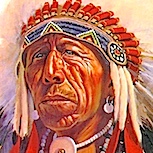
Black Elk (Heȟáka Sápa)
1863 – 1950 CE
Holy Sioux Medicine Man, Heyoka (sacred clown), wounded warrior, seer of wisdom-visions; Black Elk was spiritual but pragmatic - he became Catholic because “My children had to live in this world,” but later told his daughter, “The only thing I really believe is the pipe religion.” He went to England with Buffalo Bill's Wild West show in 1887, got lost, and traveled through Germany, France, and Italy where he saw that “The Holy Land is everywhere,” and returned with insight that inspired both the American Indian Movement and some of the best elements within European-American culture: civil rights, organic farming, renewable energy, sustainable living, and the environmental movement.

Will Rogers
1879 – 1935 CE
One of the most famous and popular, internationally recognized Native American personalities, "Oklahoma's Favorite Son,” humorist, radio and movie star, columnist, and penetrating social commentator; Will Rogers made 71 movies, traveled around the world 3 times, and wrote more than 4000 national newspaper articles. The highest paid movie star of his time and most respected political commentator, he came from a small farm in Cherokee Nation Indian Territory and set an example for Native Americans integrating into White culture and becoming successful without selling out and abandoning their heritage. Wise, kind, and humorous; he teased politicians, gangsters, and ordinary people’s confused convictions influencing them all into better ways.
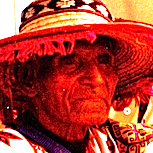
Don José Matsuwa
1880 – 1990 CE
Wounded healer, farmer, Huichol shaman, master ceremonial leader, window into our mysteriously inter-related and sacred world; Don José Matsuwa devoted his life to completing the sacred path of the shaman, to healing as a way of life and an art form restoring both individual and planetary balance. An important influence on Joan Halifax, she said, “I loved this old man. He was very funny, wise and crazy.” He visited Northern California and inspired the Dance of the Deer Foundation and the “Planetary Dance” that since 1980 has been performed each year and now in dozens of countries.
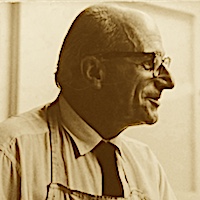
Kurt Seligmann
1900 – 1962 CE
An understanding of magic brought into the modern world
Surrealist painter, engraver, and author; Seligmann brought an openness and appreciation of mystery and magic into his art. Depicting baroque, heraldic imagery, troubadours, knights, and mythic themes; he translated his understanding of scientific magic into the visual world. During World War II, he helped artists hunted by Nazis escape from France to freedom. His art—popular with museums and collectors throughout the world—inspired an annual carnival in his native Switzerland.

John Fire Lame Deer
1903 – 1976 CE
Native Americans have a unique perspective on White, American culture. While not sharing the same values and assumptions, they still live surrounded by this foreign way of life. This makes their commentaries and critiques both more accurate and more personal than those based on a more distant point of view. Lame Deer exemplifies this perspective in a vivid and articulate style – his words are well worth taking to heart.

Papa Henry Auwae
1907 – 2001 CE
Although learning herbal knowledge from his from his 107-year-old great-great-grandmother and understanding the use of over 2,500 herbs, how to harvest and ways to use them; Papa Henry Auwae – deeply steeped in Hawaiian culture and spirituality – taught that all true healing is 80 percent spiritual and must treat the whole person. Growing up in Hawaiian schools where he was punished for speaking Hawaiian, he graduated from the University of Hawaii, became a healer for over 40 years treating everything from AIDS to broken bones but refused to take money for his services.
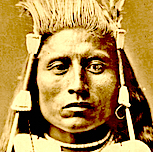
Joseph Medicine Crow
1913 – 2016 CE
Last war chief of the Crow Tribe, historian, first member of his tribe to earn a a master's degree and then 3 honorary doctorates; Joseph Medicine Crow was a hero during World War II using his native American skills to scout and confound German secret service officers. He wrote many books celebrating native culture, teaching important wisdom and skills and lectured at universities until his death at 102. Tribal archivist, founder of a college, and Traditional Circle of Indian Elders & Youth; he was also honored by white culture receiving the Presidential Medal of Freedom, the Bronze Star Medal, and the French Legion of Honor.

Carlos Castaneda
1925 – 1998 CE
An anthropology graduate student from Peru going to UCLA, Castaneda's first two books were dissertations for degrees and the first one ended with lots of academic jargon which he soon apologized about. His 12 books took on an increasingly symbolic tone and the reception changed from historical belief to conviction that they were complete fiction. This perception did little to decrease their popularity and they sold more than 28 million copies and were translated into 17 languages. Factual or not, they inspired a different way of looking at culture, value systems, and perception - one in harmony with our wisdom beyond words theme.
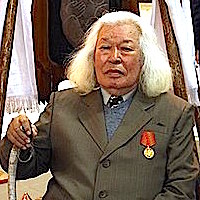
Mongush Kenin-Lopsan Монгуш Кенин-Лопсан
1925 CE –
Head shaman in the Russian Republic, respected historian, archaeologist, writer of more than 50 books, poet, and cultural healer; Kenin-Lopsan was born into a family of nomads and shamans but studied in universities and received Master's and doctoral degrees. He won many literary prizes but was persecuted and imprisoned during the Soviet Union era. When shamanism was recognized by the Russian government and their rituals no longer banned, he helped this tradition re-emerge and grow.
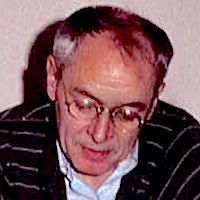
R. D. Laing
1927 – 1989 CE
Shaman, “acid Marxist,” counter-culture high priest, “Elvis of the psyche,” British counterpart to Timothy Leary, friend of Chögyam Trungpa, and psychiatrist to Sean Connery, the Beatles, Jim Morrison, and many other famous 1960’s icons; R. D. Laing was also a serious scholar who challenged orthodox psychology denouncing electro shock, chemical therapy, and the dehumanizing incarceration of the mentally ill. He developed Bateson’s double-bind theory, promoted safe haven centers, and the community-care model that has become today’s norm. Inspired by the Mahasiddha tradition of transmutation and growing the positive in perceived negative, he inspired techniques exemplified by the time he treated a patient with catatonic immobility by helping her get a job as an artist’s model.
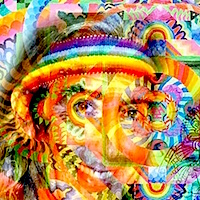
José Argüelles
1939 – 2011 CE
Author, artist, co-originators of the Earth Day events, main organizer of the Harmonic Convergence (the first globally synchronized meditation event), founder of the first Whole Earth Festival in 1970 that continues today, and inventor of the perpetual Dreamspell calendar; Arguelles promoted pluralistic syncretism. Blending ancient and modern wisdom traditions, he tried to inspire the best in people, culture, and politics. Deeply influence by astrologers like Dane Rudhyar and spiritual teachers like Chogyam Trungpa, he worked to promote Teilhard de Chardin’s concept of the noosphere and envisioned a "rainbow bridge" encircling the Earth.
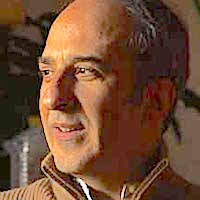
Peter Kingsley
1953 CE –
Sufi, mystic, author, philosopher, scholar; Kingsley describes a "flowering of consciousness” and the birth/beginning of western civilization during the pre-Socratic Greek period based on the influence of Parmenides and Empedocles. He describes Parmenides' nameless goddess who uses words as esoteric seeds and paradoxical divine logic to reveal unity and reality’s oneness. These seminal Orphic and Pythagorean views later distorted by Plato and Aristotle show remarkable similarities to early Buddhist, Taoist, and shamanistic traditions; modern Vedanta, Zen, and Dzogchen.
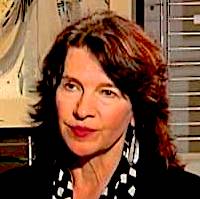
Louise Erdrich
1954 CE –
Chippewa wisdom-storyteller, poet, writer of 15 best-selling novels, Pulitzer Prize finalist, and World Fantasy Award winner; Louise was part of the first class of women admitted to Dartmouth College. A powerful voice for both Native American wisdom and rights, she refused an honorary doctorate from the University of North Dakota because of their Fighting Sioux mascot, wrote a novel about an historical lynching of four Native people based on trumped-up charges, hosts writers' workshops on the Turtle Mountain Indian Reservation, started and runs a “teaching bookstore” that also sells Native American jewelry, art and traditional medicines.
Related Sources (1 sources)
Report to Greco by Nikos Kazantzakis
Quotes about the Shamanistic Lineage (11 quotes)

“Whoever speaks in primordial images speaks with a thousand voices; he transmutes our personal destiny into the destiny of mankind, and evokes in us all those beneficent forces that ever and anon have enabled humanity to find refuge from every peril and to outlive the longest night.”
Comments: Click to comment
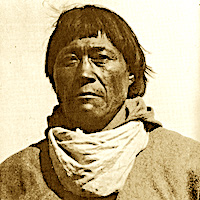
“Then, for no reason, all would suddenly be changed, and I felt a great, inexplicable joy, a joy so powerful that I could not restrain it but had to beak into song, a mighty song, with only room for one word: joy, joy! And then in the midst of such a fit of mysterious and overwhelming delight I became a shaman not knowing myself how it came about. I could see and hear in a totally different way.”
Comments: Click to comment
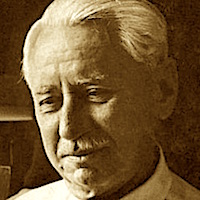
“Magic is the father of science... Many of the most famous and trusted cures in history were magical... It was to the advantage of the magicial to study causes and effects, to find natural means of accomplishing the desired end... our scientists in every filed of research are the direct descendants of those ancient magicians.”
Comments: Click to comment
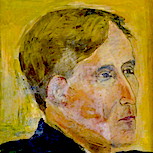
“The prejudice against shamanism went hand in hand with the rise and spread of Confucianism. It was founded, I think, on the saying attributed in more than one place to Confucius that one should 'revere Spirits, but keep them at a distance.'”
Comments: Click to comment

“The shaman's relation with the Spirit is represented as a kind of love-affair. One is, of course, vaguely reminded of temple prostitutes in the Near East, and of devadasi and Krishna's relations with the adoring cow-girls in India.”
Comments: Click to comment

“It was during the 4th century that Christianity overcame the pagan cult and magical rites... The persecutions of which they were the cause rank among the major misfortunes that have visited the West.”
Comments: Click to comment
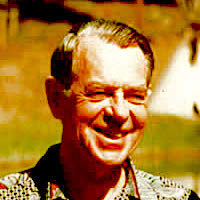
“There is a major difference between a shaman and a priest. A priest is a functionary of a social order but the shaman's powers come out of a psychological experience, not a social ordination.”
Comments: Click to comment

“We find a shamanic aspect in practically all the hunting cultures because they’re individual… hunters are trained in individual skills that require very special talents and abilities. When the big emphasis became settled village life, the shaman lost power… The shamans were reduce to a kind of clown society. They are magicians of a special power, but their power is now subordinate to a larger society.”
Comments: Click to comment
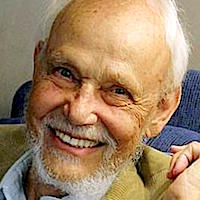
“It was under the rubric of magic that the Taoist church—dividing the territory with freelance wizards, exorcists, and shamans—divided ways to harness higher powers for humane ends.”
Comments: Click to comment
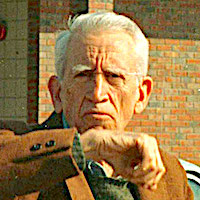
“Isn't the true poet or painter a seer? Isn't he, actually, the only seer we have on earth? Most apparently not the scientist, most emphatically not the psychiatrist.”
Comments: Click to comment
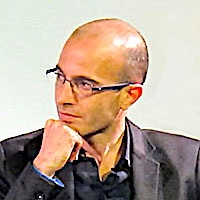
“The true expertise of priests and gurus has never really been rainmaking, healing, prophesy, or magic. Rather, it has always been interpretation... A priest is somebody who knows how to justify why the rain dance failed, and why we must keep believing in our god even though he seems deaf to all our prayers.”
Comments: Click to comment
Comments (0)